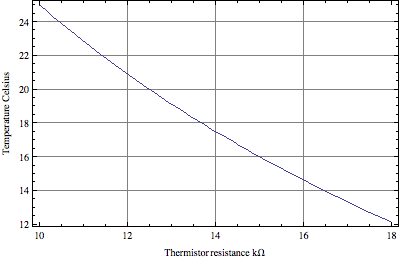
Return to home page
Sometimes one needs a simple TEC driver without very high temperature stability, for example for just keeping higher power DVD diodes at a feel-well temperature of like 15-18C. Certainly there are fully integrated Peltier controllers available (eg., based on MAX1968 and LTC1923 as used in my Coherent Compass 315M driver), but these very tiny SSOP SMD devices are a pain to handle, are expensive and are also "too precious" for this crude application. For the present purposes, small size and extreme stability are not important, and keeping the temperature constant to 0.1 degrees, say, is more than enough. So why not make use of one of these cheap but highly integrated stepdown buck converters that contain most of the necessary components. There are zillions kinds of such ICs on the market, and I just had a few MAX726 at hand, and there are many similar chips available. Almost any other chip can be used here, which has a connection to the output of the internal voltage comparator (this pin is used for compensation and thus often called "comp"); many of the more modern chips don't have this pin, so one needs to check beforehand. Other examples for such chips are most of the L-series of ST, like the L4973D3.3, L5973D, and L7981, or the FAN8301 (one thing to care about is that often the feedback and/or compensation pins have some extra control functionality built in, and this may interfere with our purposes; best is if these pins just behave as opamp inverting input and output). In the following I focus on the MAX726.
Essentially, all what is necessary is to connect the feedback input to a thermistor. The output current is limited internally at 2-2.5A, which is just right for small TECs; this current is drawn only for a short time during cooldown, so heat sinking can be moderate. So here is the simple circuit:

Any Schottly diode can be used with a current rating of 3A onwards, and obviously the inductor must be able to sustain the current as well. One may also add more output caps for better ripple suppression, but it is not important for this application. The thermistor I used has 10K @ 25C. Since we do not care about highest temperature precision, we don't use any fancy PID control loop, but we added in version 1.1 an integrator C1/R4 to improve stability, though it was not necessary for our diode mounts. If for very different thermal loads the circuit is not stable, one may play with R4 and C1; ideally R4 is chosen to be as large as possible without oscillation.
Other chips have a reference voltage avalaible on some pin, in this case one wouldn't need the 78L05 voltage regulator (a 5.6V Zener would also do; other chips, such as the L5973D, have a reference voltage output and this can be used instead). All what is important that at the desired temperature, the voltage at the feeback pin is equal to the chips' internal reference voltage (typically, 1.2 - 3.3V). The NTC thermistor will have at the relevant temperature range a resistance of approx 13...15KOhms, and so one simply needs a simple resistor voltage divider that yields with that resistance the appropriate reference voltage (for the MAX726 ca 2.2V). Here for quick reference a resistance chart for a 10K @ 25C thermistor:

This shows the turnon behavior:

After stabilization I touched briefly the diode mount in order to check the response, which is fine even without any further feedback loop optimizations:

Note the noise fluctuations are around 0.01degrees which is not bad at all, however this circuit would not be sufficient stable enough for holography applications.
This basic circuit can be improved for much higher temperature stability (suitable for diode holography), by adding a low-drift precision opamp frontend and a precision voltage reference; this is described here.
A source for links to other simple TEC controllers is this thread of photonlexicon.com. However some of the circuits are a bit too complicated for the simple purpose.
Return to home page
Vers. 1.0 -08/10